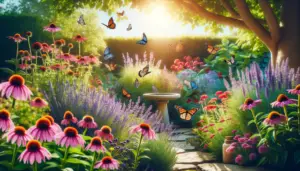Introduction
Bermuda grass, scientifically known as Cynodon dactylon, is a warm-season grass that is popularly used for lawns, sports fields, and golf courses due to its ability to withstand high temperatures and heavy foot traffic. However, to ensure its healthy growth and vibrant appearance, it is important to understand how much sun Bermuda grass needs. In this article, we will explore the sunlight requirements of Bermuda grass and provide valuable insights for maintaining a lush green lawn. So, let’s dive in!
Understanding the Sunlight Needs of Bermuda Grass
Bermuda grass is a sun-loving grass variety that thrives in areas with abundant sunlight. It is classified as a full-sun grass, which means it requires at least 6 to 8 hours of direct sunlight per day to grow optimally. The availability of sunlight directly affects the growth rate, color, density, and overall health of Bermuda grass.
How Much Sun Does Bermuda Grass Need?
To ensure the healthy growth of Bermuda grass, it is essential to provide it with the right amount of sunlight. Bermuda grass needs a minimum of 6 to 8 hours of direct sunlight daily to thrive. This requirement can vary slightly depending on the climate and geographical location. In regions with hot summers and mild winters, Bermuda grass can tolerate and even benefit from longer exposure to sunlight.
The Impact of Sunlight on Bermuda Grass Growth
Sunlight plays a crucial role in the growth and development of Bermuda grass. Here are some key ways in which sunlight affects Bermuda grass:
- Photosynthesis: Sunlight is vital for the process of photosynthesis, through which plants convert light energy into chemical energy. Bermuda grass relies on photosynthesis to produce carbohydrates, which are essential for growth and maintenance.
- Root Development: Adequate sunlight promotes robust root development in Bermuda grass. Well-developed roots enable the grass to efficiently absorb nutrients and water from the soil, leading to healthier and stronger plants.
- Photosynthetic Pigments: Sunlight stimulates the production of photosynthetic pigments, such as chlorophyll, in Bermuda grass. These pigments are responsible for the green color of the grass and are essential for photosynthesis.
- Dormancy and Recovery: Sunlight exposure influences the dormancy and recovery periods of Bermuda grass. In cooler months, reduced sunlight triggers dormancy, allowing the grass to conserve energy. When sunlight increases again, Bermuda grass reactivates, resuming growth and greening up.
FAQs about the Sunlight Requirements of Bermuda Grass
How much sun does Bermuda grass need?
Bermuda grass requires a minimum of 6 to 8 hours of direct sunlight daily to grow optimally.
Can Bermuda grass survive in partial shade?
While Bermuda grass prefers full sun, it can tolerate some shade. However, it may not grow as vigorously or maintain its vibrant green color in shaded areas.
What if my lawn doesn’t receive enough sunlight?
If your lawn doesn’t receive enough sunlight, Bermuda grass may struggle to grow and may become thin, weak, or susceptible to diseases. Consider trimming back overhanging trees or shrubs to allow more sunlight to reach the grass.
Can I grow Bermuda grass indoors?
Growing Bermuda grass indoors is not recommended due to its high sunlight requirements. It is best suited for outdoor areas with ample sunlight exposure.
Are there any Bermuda grass varieties that require less sunlight?
Some Bermuda grass cultivars, such as TifGrand and TifTuf, are known to have improved shade tolerance compared to other varieties. However, even these cultivars still require a significant amount of sunlight to thrive.
How can I determine the sunlight exposure in my lawn?
To assess the sunlight exposure in your lawn, observe the area throughout the day and note the hours of direct sunlight it receives. Additionally, consider using a sunlight meter, commonly known as a “sun calculator,” to obtain accurate measurements.
Conclusion
Understanding the sunlight requirements of Bermuda grass is crucial for maintaining a healthy and vibrant lawn. Bermuda grass thrives in full sun, requiring a minimum of 6 to 8 hours of direct sunlight per day. Sunlight plays a vital role in the growth, color, density, and overall health of Bermuda grass. By providing adequate sunlight, you can ensure that your Bermuda grass lawn remains lush and visually appealing.
Remember to regularly monitor the sunlight exposure in your lawn and make necessary adjustments to promote optimal growth. Trimming back overhanging trees or shrubs and selecting the right Bermuda grass variety can help you achieve the desired sunlight conditions for your lawn. With the right care and attention, your Bermuda grass lawn will become the envy of the neighborhood.








